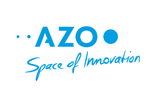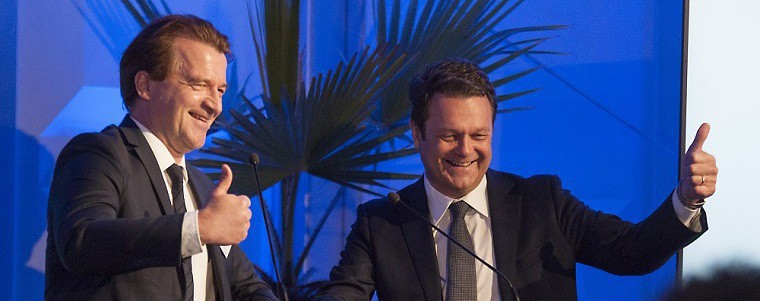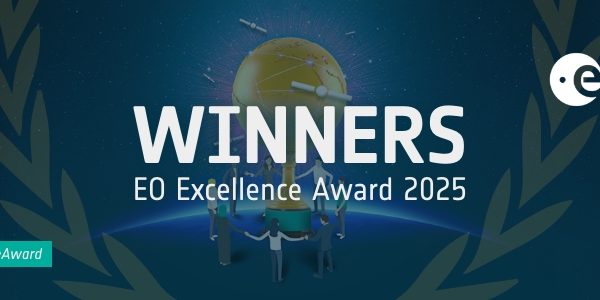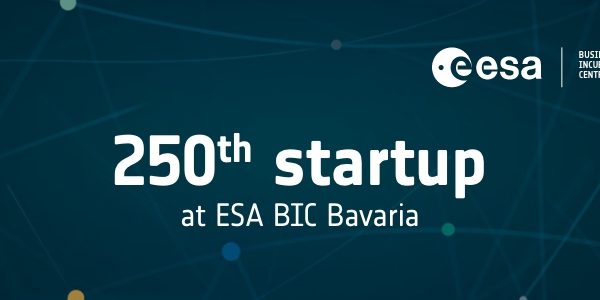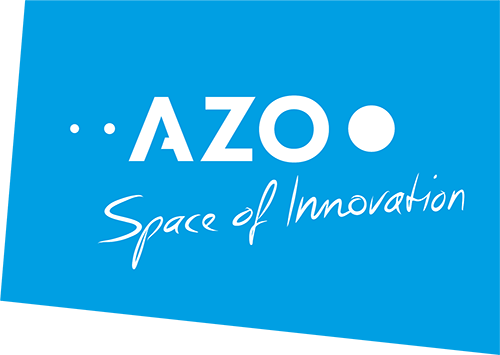The EU’s influence in establishing space as a pillar of growth for innovation, business and entrepreneurship is strong. The European GNSS Agency (GSA) is at the forefront of linking Europe’s space technology to user needs for the EU satellite navigation programme Galileo.
These user needs are continuously increasing in connection with the huge number of 5.8 billion Global Navigation Satellite Systems (GNSS) devices in the world today. By 2020, this number is expected to grow to over 8 billion. Moreover, the downstream market will produce over EUR 70 billion in revenue annually by then, according to the latest GSA GNSS Market Report.
The GSA Executive Director Carlo des Dorides gave an exclusive interview about commercial space developments, the impact of new business ideas and Galileo user needs.
The interview covers all sorts of grounds, ranging from the fascination of Galileo, where Carlo sees Galileo’s innovation competition in five years from now, to what distinguishes GSA’s activities from other international space players.
Carlo des Dorides (CD) was interviewed by Matthias Engler (ME), Content Marketing Manager AZO, in the context of the 10-year partnership between GSA and the European Satellite Navigation Competition (ESNC). Enjoy the read and find inspiration to discover the ESNC and its business opportunities.
ME: You have been working for space service-focussed companies and organisations for almost three decades. After so many years, what fascinates you about Europe’s satellite navigation programme Galileo?
CD: Galileo started out as a dream and, thanks to cooperation between the EU’s Member States, this dream has become a reality. This is what excites me most about the Galileo programme – the fact that it is a truly European accomplishment that would have been impossible to achieve by any one country on its own. At a time when there is a lot of division in the world, Galileo is a perfect example of what we can achieve by working together.
The fact that Galileo is a civilian GNSS system is also one of its most important distinguishing features – its primary function is to provide services to Europe’s citizens, and it is doing this very successfully, delivering added value to end-users.
GNSS is already making a real contribution to economic growth in Europe. According to the GSA’s most recent GNSS Market Report, the global GNSS market is expected to grow from 5.8 billion devices in 2017 to an estimated 8 billion by 2020, with the GNSS downstream market expected to produce over €70 billion in revenue annually, which more than doubles when revenue from added-value services is included. So, even after three decades in working in the space sector, is still fascinating to see how space technologies in general, and GNSS in particular, are being embraced by the public and changing their lives for the better in ever more innovative ways.
ME: What would you respond to a person who says that satellite navigation just gets me from location A to B?
CD: Personal navigation, either with a hand-held device or an automobile satnav, is perhaps the GNSS application with which users are most familiar. But GNSS is about so much more than getting from A to B. Somebody who uses their navigation device to drive to the nearest supermarket may not necessarily be aware that the food they buy there has been produced with a reduced environmental impact thanks to GNSS-enabled precision farming techniques. But this is increasingly true, as the agriculture sector has been one of the earliest and most enthusiastic adopters of GNSS technology.
GNSS connects the world, and supports the provision of new services in many different areas – from smart mobility to eHealth and from the Internet of Things to the eCall emergency response system, which leverages EGNOS and Galileo to enable emergency teams to locate an accident faster and with much greater accuracy.
We are living in the Golden Age of GNSS – the technology is now ubiquitous and the market is growing exponentially, with new services and applications emerging every day – a process to which the ESNC also contributes.
ME: Galileo is now available in the most common new smartphones. What is the next step for both the users and the industry?
CD: Industry has been quick to realise the potential of the additional reliability, accuracy and availability provided by Galileo which, in turn, is enabling a wide a range of new applications and services.
Thanks to the partnerships that the GSA has built over the years with leading chipset and receiver manufacturers Galileo has been quickly incorporated into phones, wearables, cars, computing and IoT devices. The Internet of Things is also significantly increasing the number of services and applications that require precise positioning. Consequently, there will be more GNSS devices in the world than people by 2020, with associated growth in the number of applications and services.
But we are not daunted by this – European GNSS is ready to face the major technology trends that lie ahead and is ready to support new European innovations that leverage the greater accuracy and authentication provided by Galileo.
While industry is very aware of the benefits that Galileo increased accuracy offers, the general public are perhaps not so aware, so increasing public awareness of Galileo and its benefits will be high on our agenda. For instance, the GSA’s ‘useGalileo.eu’ tool helps users keep track of Galileo-enabled devices as they become available, in all EU languages.
ME: Across the globe, there are many space institutions. What distinguishes GSA activities from those of international space agencies?
CD: We are proud to be a European Union organisation and the only EU agency focused on space operations and service delivery, this is important to remember. It is also important that we are a civilian agency, whose primary aim us to ensure that European investment in space pays off for European citizens.
The GSA plays a unique role in linking space to user needs. We are here to ensure investment in space infrastructure pays off for Europe’s economy. Through user consultations, or by funding research and development or monitoring the latest developments in GNSS applications and technology, the GSA bridges the gap between the Galileo satellites in space and the many services and applications they provide. To achieve this, we have put together a unique team of experts not only in aerospace and research, but also in security, market and business development and communications. This means that we are uniquely positioned to deliver on the promise of providing independent European Union space services to the world.
ME: Innovation is a key enabler for new space based products and services in everyday life. What kind of novelties excite you the most?
CD: I am excited by all the novel applications that I see are being enabled everyday by European GNSS technology. Space is improving people’s lives in ways that were unimaginable only a few years ago. I am excited to see European GNSS-based ideas boosting innovation in the field of Smart Cities, the Internet of Things, mobile health and many other applications. If I had to choose one particular area of application, I would have to say that I find it most gratifying when I see GNSS being used to improve the lives of disadvantaged or marginalised groups in society. There are many example of this – including winners in the ESNC, such as the EGNOS-enabled 3DSOUND project that won the GSA Special Topic Prize a number of years ago which improves mobility for the blind. It is also extremely gratifying to see GNSS being used to save lives, like in the Mobnet project, which integrates GNSS into UAVs to make search and rescue operations more effective; or indeed the eCall emergency response system, mandatory in all new cars sold in the EU since March this year, which will save many lives on Europe’s roads.
ME: Speaking of innovation: This year, GSA and the European Satellite Navigation Competition (ESNC) celebrate their 10-year long cooperation. What role does the innovation competition play for the commercial downstream sector in Europe?
CD: ESNC is an important driver for new applications and services based on the higher location accuracy provided by Galileo, and market uptake potential is an important criterion when evaluating the projects submitted. During our 10 years of partnership with the competition, the GSA has awarded a Special Prize to contenders who presented the most pioneering ideas for the commercial use of Galileo and EGNOS. As in previous years, this year’s competition targets GNSS downstream applications with clear market uptake potential that leverage EGNSS differentiators, such as multiple frequency. Through the competition, support is also provided to entrepreneurs, start-ups, and spin-offs in the downstream space market, through the ESA Business Incubation Centres (ESA BICs) and through the E-GNSS Accelerator, which aims to support entrepreneurs and start-ups to move beyond idea conception into business incubation and to promote the development phases of truly commercial ventures. In this way, the competition plays a significant role in helping exciting GNSS-based ideas make it from the drawing board into people’s devices.
ME: How do GSA’s activities and the ESNC complement each other?
CD: Fostering innovation has always been a key aim of the GSA. Like the ESNC, we aim to encourage the development of market-driven applications that use satellite navigation technology. As part of its primary mission, the GSA has helped to foster countless innovations, revealing unexpected trends in the downstream satellite navigation market. And, for the past 10 years, the ESNC has been a big part of that effort, by annually awarding the best services, products, and business ideas using satellite navigation in everyday life.
I think that the GSA brings added-value to the competition. The response to our annual prize among developers has been impressive. As part of its Special Topic Prizes, the GSA has received more than 80 innovative proposals per year, covering new applications across the broad scope of sectors that benefit from Galileo and EGNOS in a wide variety of areas from Augmented Reality, Unmanned Aerial Vehicles and e-Mobility to Location based services E-Health and the Internet of Things. These and the other GSA ESNC prize winners over the years have established the ESNC as a major driver of new, useful and economically viable GNSS applications.
ME: Let’s reach for the stars: Where do you see the GSA and ESNC partnership in five years from now?
CD: Together, the GSA and the ENSC have had some great successes in helping to bring innovative GNSS-based applications to the market. I see this important work continuing in the coming years, and hope that the GSA-ESNC partnership will go on expanding the market and that we will continue to stimulate innovation in Europe and ensure that European citizens continue to reap the benefits of cutting-edge European GNSS applications and services into the future.
